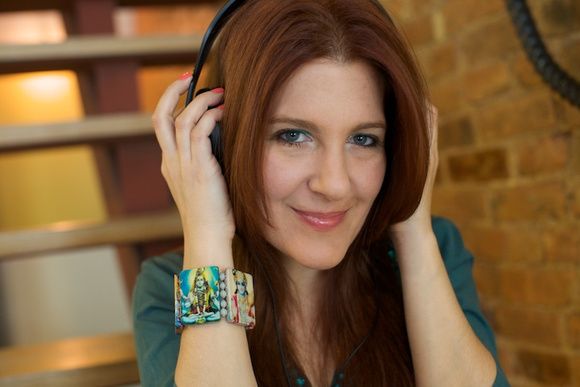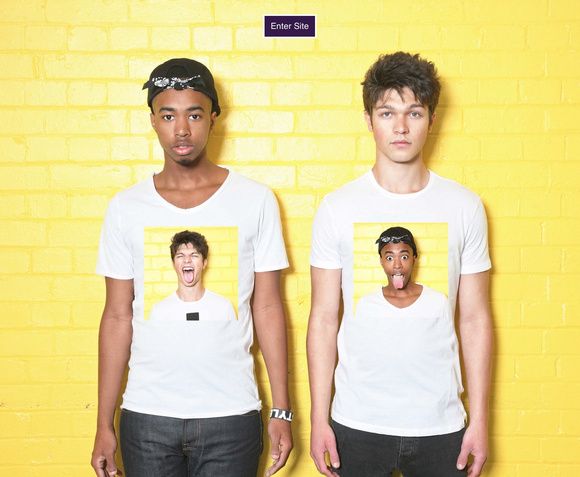I got a slap in the face in Perth, Australia, on one of my recent trips there to talk about apps, social media, and advanced web marketing strategies. I had one-on-one consulting sessions with artists for my firm, Cyber PR, and I was shocked to discover that a vast majority have a big problem.

Guest Post: Effective Websites for Musicians
Ariel Hyatt, founder & president of Cyber PR®
They don’t have web sites.
When I say they don’t have web sites, I mean they’re only using social media profiles like MySpace and Facebook. Both of these platforms are great and definitely useful. But using them in isolation is a critical mistake, as I write about here.
I started asking around and quickly found out that the price tag is what keeps most of these artists and musicians from getting a really great website. Facebook and MySpace, on the other hand, are free. Some of my clients have shown me quotes of $5,000 for a website, which is not okay. It’s not 1997 anymore, folks. An effective website for artists and musicians can be created for $10-$20 a month. In all the years I’ve been recommending that artists and musicians find a way, any way, to get their own website, I haven’t found a tool as perfect as Websites 360® for doing so. Websites 360® meets all the requirements for up-and-coming artists who want to gain credibility but can’t pay out the nose for it. Websites 360® is easy to use, incorporates social feeds, has an awesome way to feature audio (using Spotify, SoundCloud, Bandcamp) and video (using YouTube, Vimeo, or Kickstarter) and allows plenty of creative options so artists and musicians can easily brand themselves. It can also integrate with the FanBridge marketing service so your fans can sign up to receive your email updates. The whole thing is mobile-friendly, so fans can listen to music, check out upcoming shows, and read your live social feeds from any device they’re using.
How to get started
I think that most artists make themselves crazy building websites because they have trouble keeping it simple. Simplicity is key, because the easier your website is to update, the more you’ll do it. It’s also important from a usability perspective, because it keeps the main thing the main thing. Remember, your website exists for two reasons:
- One: To help you engage with your fans.
- Two: To make you money.
That’s it. And it can do both, provided you know a few keys to get you started.
Step 1: Buy your domain name.
There are reputable registrars out there, such as GoDaddy (USA) or CrazyDomainNames (AUS) where you can buy a domain name for about $10/year. I highly suggest registering a dot com (.com) instead of a dot net (.net), with no dashes or underscores in the URL if you can help it.
- TIP: Make sure that the YouTube, Twitter and Facebook page names that correspond to your domain name are also available. You want to your social handles to match your URL.

Step 2: Decide between DIY design or getting the pros to help.
Build It Yourself: The Websites 360® tool is super user-friendly. If you decide to start from one of their themes and customize it yourself, there are all kinds of options for you to play with, from colors and fonts to image galleries and custom backgrounds, as well as fun options for styling your social feed, adding audio and video, etc. Make sure you get someone you trust, like your manager or PR agency, to look it over before you start promoting it. It should clearly look like your band or most recent release. The language you use should sound like you. And it should be easy to navigate. More on that later.
Work With a Designer: Websites 360® also offers some creative services, which is what most of my clients do to give them a jumpstart. It’s just nice to have a professional doing the heavy lifting, developing a content strategy to decide where everything should go and which colors work best where. Tyler N Stevie, a band I recently signed, worked with a designer at Websites 360® who did a knock-out job taking their personality and the energy around their fan base and turning it into a website.
Step 3: Build your home page.
Whether you’re doing it yourself or collaborating with a pro, here are some things to keep in mind.
Easy Navigation: Your website should be easy to navigate with a clear nav bar featuring the most important content on your website.
Branded Style: Develop a brand – the colors, fonts, and logo that visually represent you. Write a short “pitch” that you can feature on your home page and use over and over on everything from your iTunes profile to your Facebook page to press releases. If you feel weird creating a “pitch,” use a killer press quote or fan quote that sums up the way you sound.
- TIP: your social profiles should all match your site colors.
Stunning Photos: If you spend money on one thing, spend it on a few really amazing professional photos of you and your band. In lieu of that, feature the cover art of your latest release on your home page. Tyler N Stevie got Websites 360® to do some custom development to create a full-bleed slideshow of fun photos as their landing page. From there, fans can click ‘Enter Site’ to get into the rest of the content, which features their upcoming shows, a place to subscribe to their newsletter, a track from their SoundCloud page, and their Twitter feed streaming in real time on their sidebar.
Clear Navigation: There are a few sections you always want to feature in your nav if you’re an artist, musician, or any kind of personality.
- Bio. This should be the same thing as your press kit (which you can get on ReverbNation).
- Buy. This can link out to a storefront or iTunes so fans can easily buy your music and other merch.
- Events. It should be crystal clear where your next show or appearance is. You can feature your calendar on your home page or in your sidebar, where it will stick on every page. But you should also have a page dedicated to listing out all your upcoming performances.
- Blog. Even if you only post once a week or once every two weeks, having a blog on your website is critical for artists and musicians. In fact, I just wrote about the top seven reasons every musician should blog. It’s not only a way to keep your website looking fresh (and alerting search engines that your site is active), but it helps engage your fans because they can get an idea of what you’re working on, where you are, and then leave you feedback in the comments.
- Contact. Make sure that you include an e-mail address or a contact form so people can contact you for online publicity, booking, or just to tell you they like your music. Don’t make it hard for anyone to find you online. Fans should feel like you are easily accessible.
After your site is done, make sure to keep your social media sites updated! That means daily. (For how to do it, check out a recent post on my blog with everything you need to know. It's called Ariel Hyatt's Social Media Food Pyramid.) That way your whole site remains interesting and dynamic and fully updated.
- Ariel Hyatt is is a thought leader in the digital PR world: the founder of a successful PR firm; international speaker & educator; and the author of two books on social media and marketing for artists. Ariel’s Cyber PR® process marks the intersection of social media with engaged behavior, PR, and online marketing. Find out more by visiting the Cyber PR® website.
